Wet and Needle Felting
Wet felting is a textile art form that has been practiced for thousands of years. Wool fibers are combined through a process of layering, wetting, and agitating to form a desired felt sheet or shape.
Want to jump right into needle felting? Check out our art box:
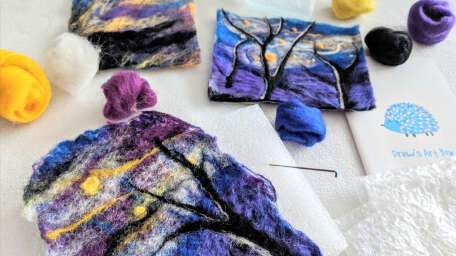
Check out this wet felting video by Natasha Smart to learn more about the process.
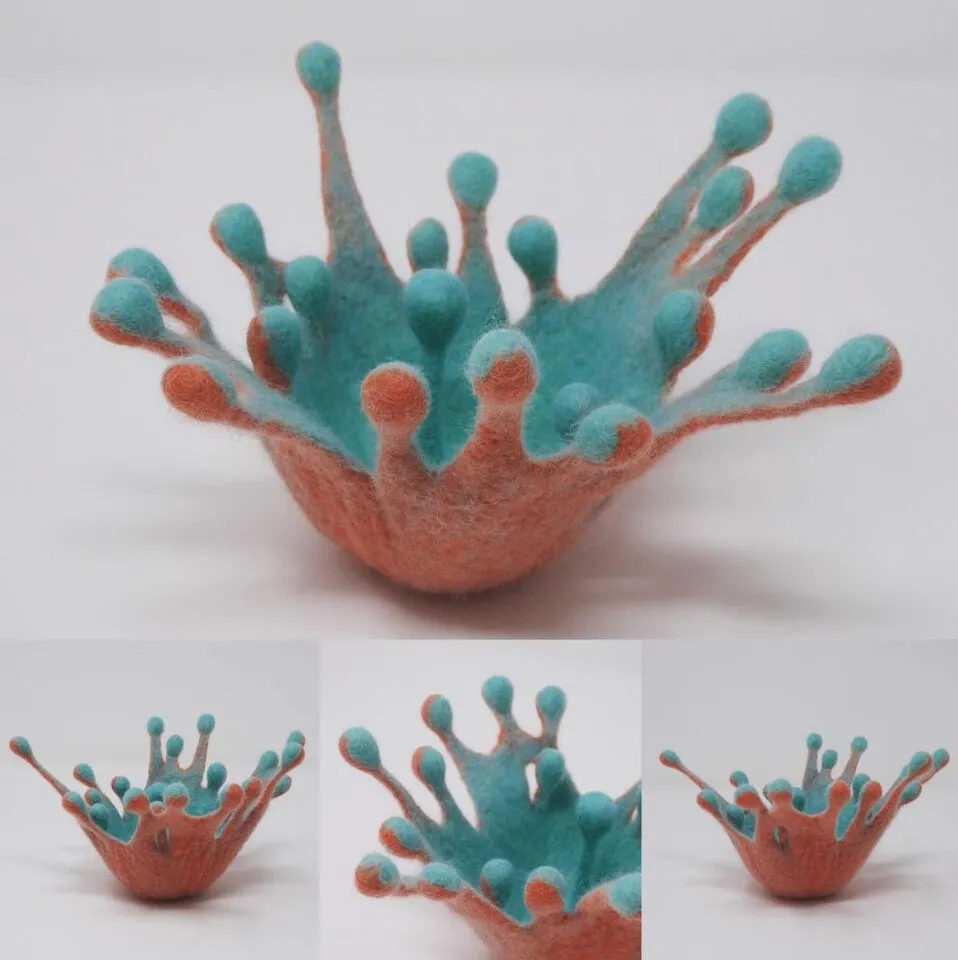
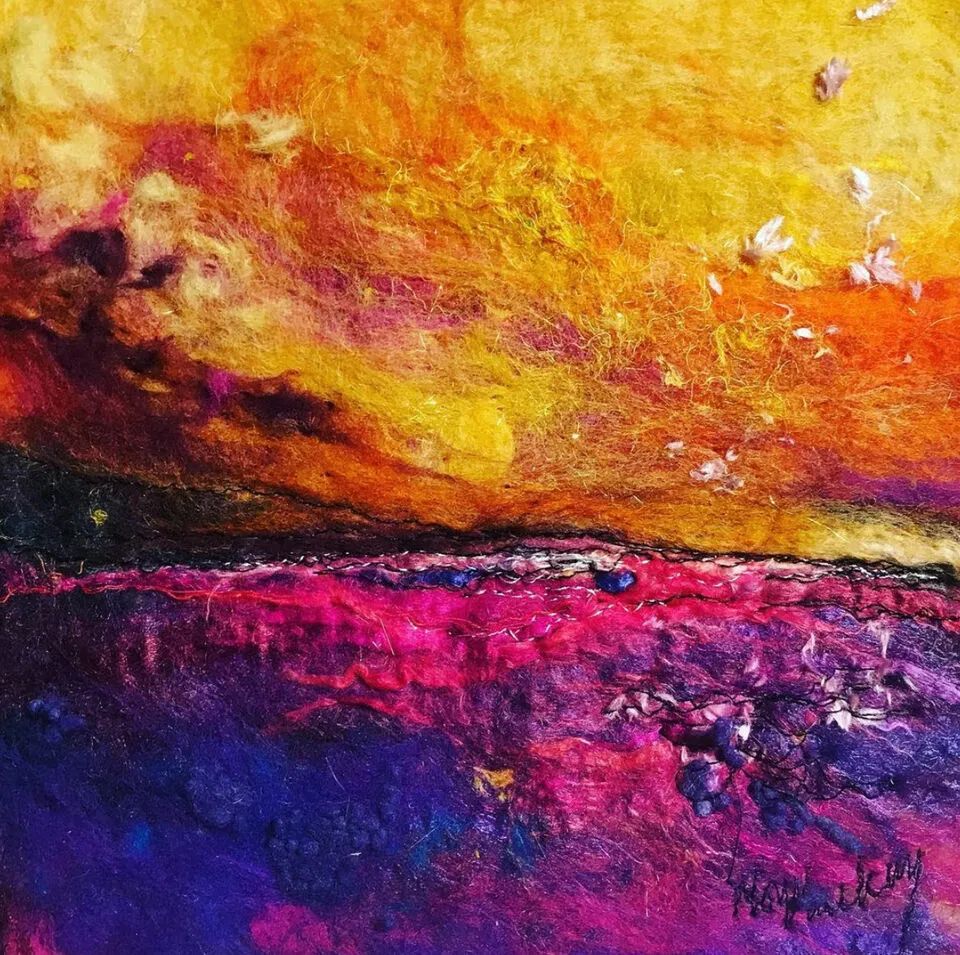
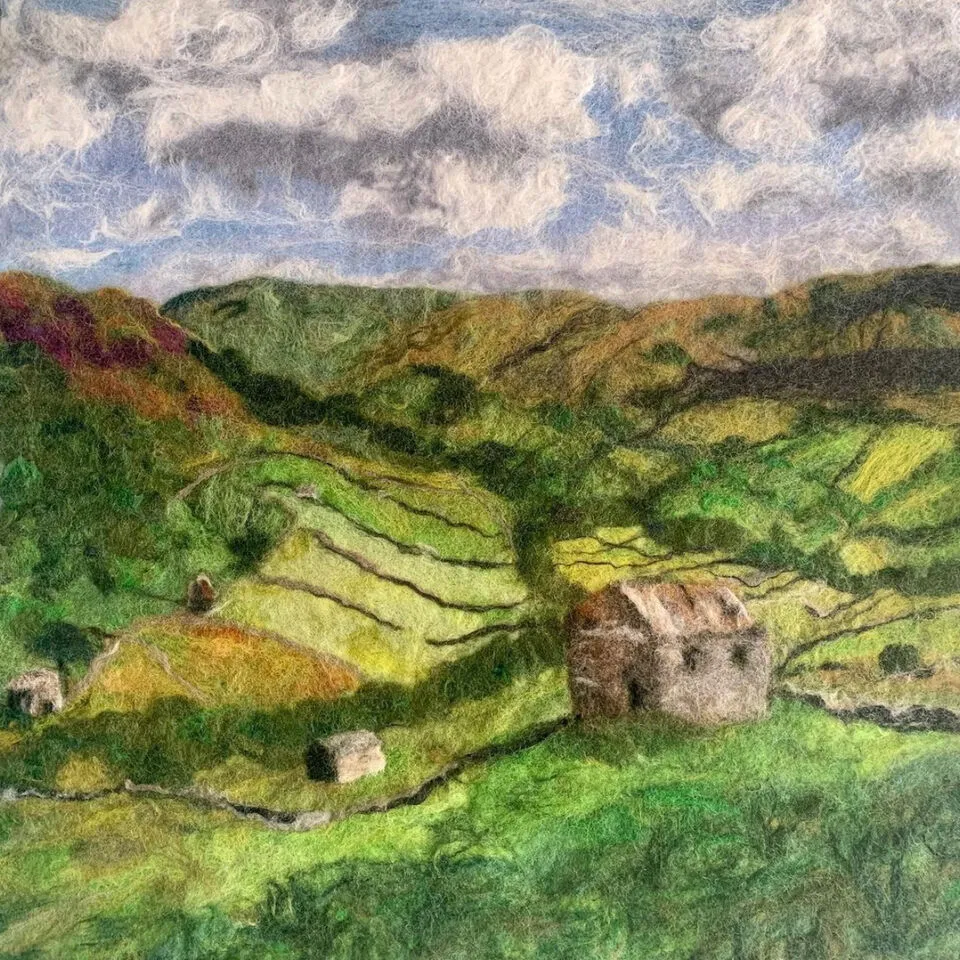
The historical origins of using wool to create objects and clothing dates back to ancient times, around 5000 BCE. As sheep were one of the first domesticated animals, ancient tribes and nations used wool to create yurts, shoes, clothes, rugs, and bags using a process that involved wetting and pushing together wool fibers. In fact, most theories suggest wet felting was discovered by accident through the wool lining in shoes. The wearer would sweat and step and eventually this wetting and pressing process turned the wool into felt!
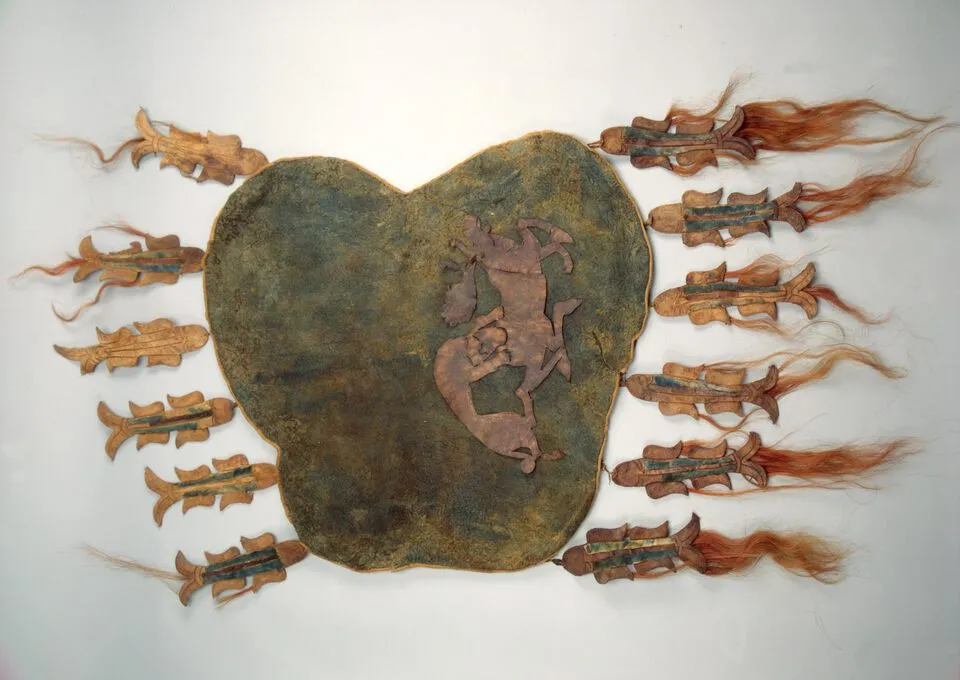
This felt saddle cover dates from 5th century Russia and features a brass tiger attacking an elk.
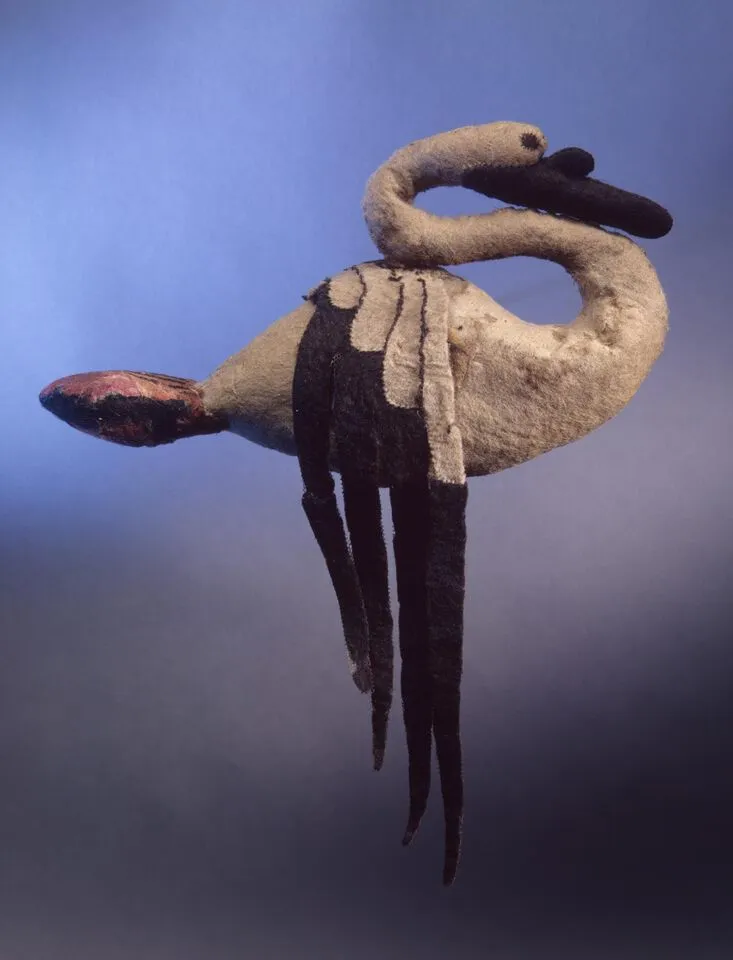
This piece dates from the 4th or 5th-century Pazyryk culture in the Bolshoy Ulagan River Valley. It is one of the earliest pieces of three-dimensional felting. It is filled with structural materials as an ornamental figure.
Needle felting, a textile art form and relative of wet felting, involves pushing, pulling and locking together woolen fibers with a needle. During the European industrial revolution, the advancement of using barbed needles on factory looms furthered the age-old wet felting method and eventually inspired this needle-punching technique. To see needle felting in action, check out this short video from the Smithsonian Institute.
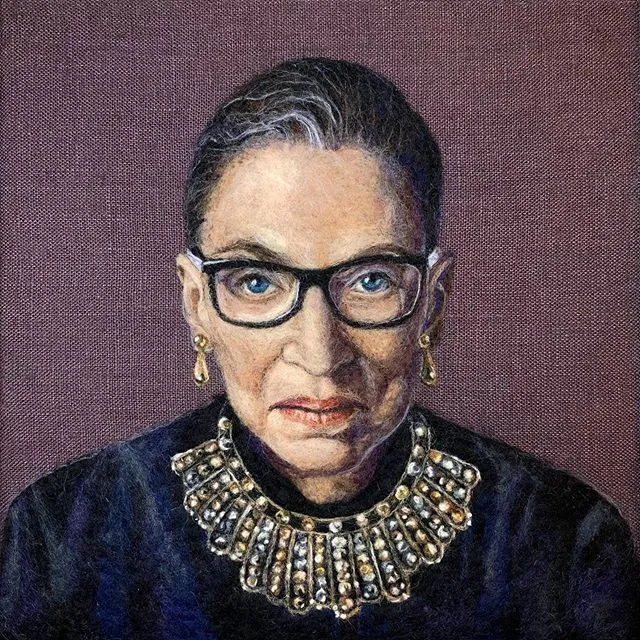
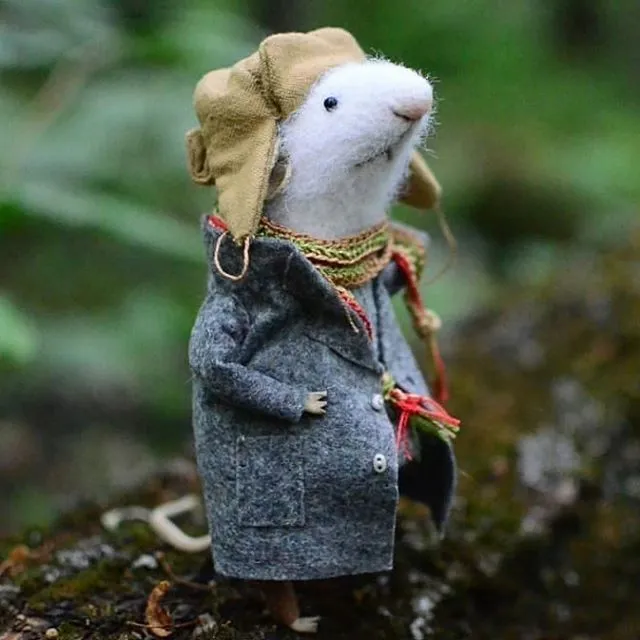
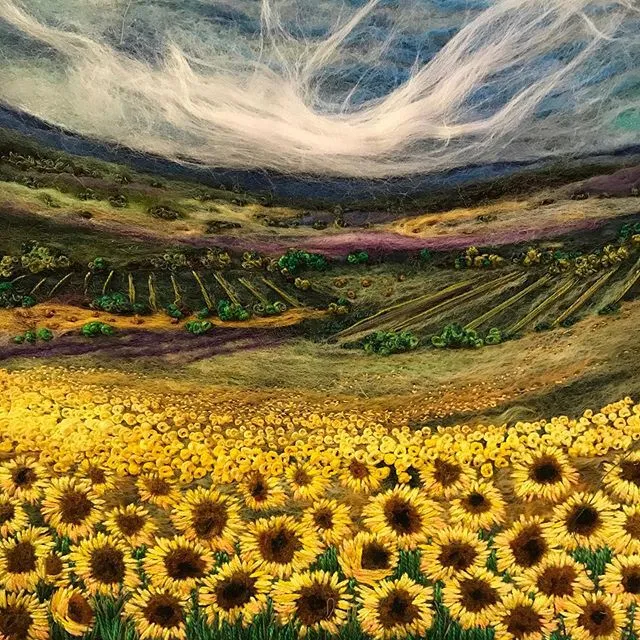
Eleanor Stanwood
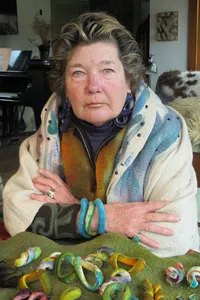
But, we can’t go on talking about needle felting without spending a moment on the American fiber artist Eleanor Standwood, who unquestionably made a big contribution to this endless craft.
Eleanor acquired much experience and knowledge about wool from shearing sheep and raising livestock of her own in Vermont. In the late 70’s, she became a director of livestock at the Farallones Institute. In partnership with the USDA Wool Research Laboratory in Berkeley California, she helped farmers who didn’t know what to do with their yearly sheared wool by processing it into beautiful springy batting that could be used to stuff things such as comforters.
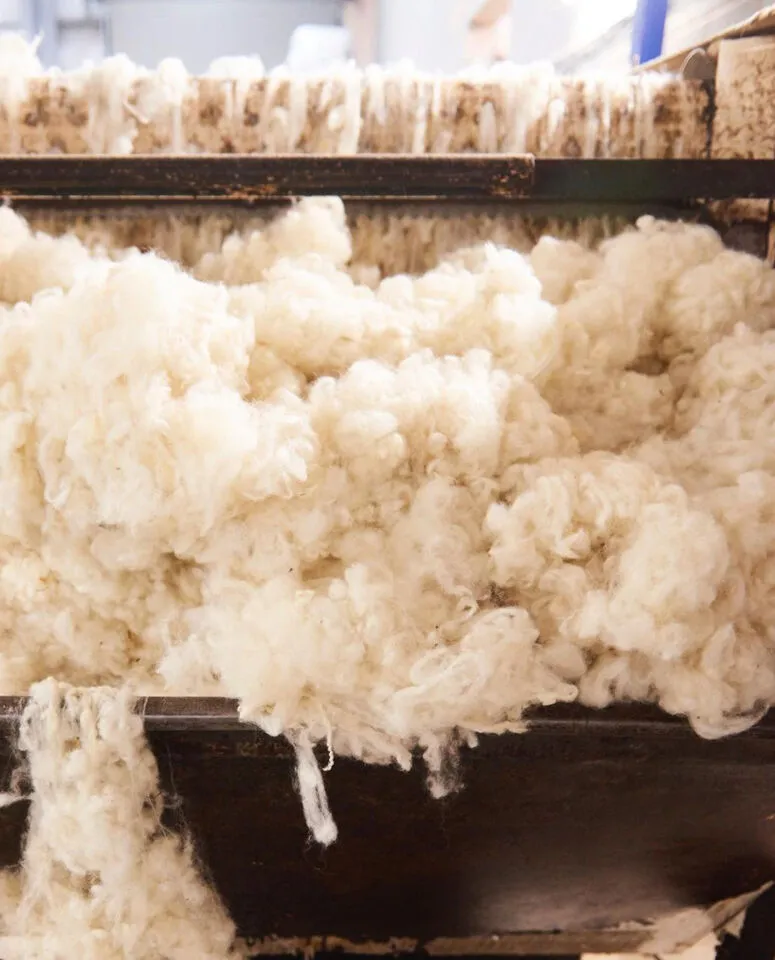
After a visit to a Germany felting factory, Eleanor began experimenting with an industrial loom, while her husband, an inventor, saw what he could do with a barbed needle. He repeatedly jabbed the needle into a mass of wool to shape into place, then applied heat and pressure to create a solid and stiff form.
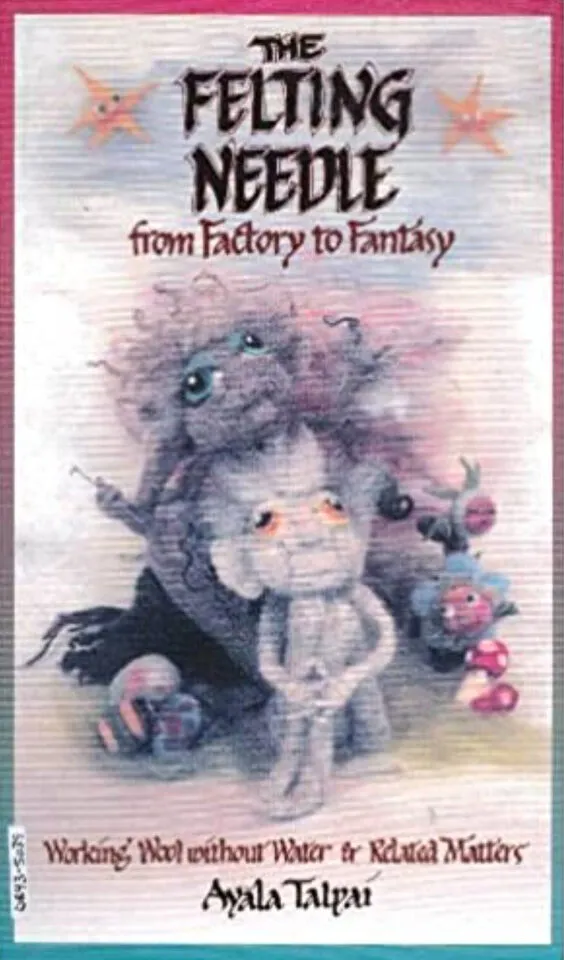
A book about needle felting
His technique inspired a friend, Ayala Talpai, to create a book about needle felting that resulted in a multi million dollar craft industry.
The world of wet and needle felting provides creativity for artists of all kinds. To name a few - artists like Simon Brown and Kiyoshi Mino are creating lifelike three-dimensional pieces depicting nature and wildlife. Japanese artist Wakuneko creates hyper-realistic cats, so much so you’ll want to pet them. And Paulo Puck creates giant masks that are breathtaking and not for the faint of heart.
Fiber artists might use needle felting, wet felting, or a combination of both to create home decorations, hats, clothing, and bags. Some might even add a strip to spice up a sweater or patch up a hole in a glove! There are hundreds of possibilities with this ancient art textile form, and the best part: felt is made of wool, making it an environmentally friendly art material. As Eleanor once said, “you can throw it on your compost pile.”
Want to read this offline? Feel free to print this post for offline reading!